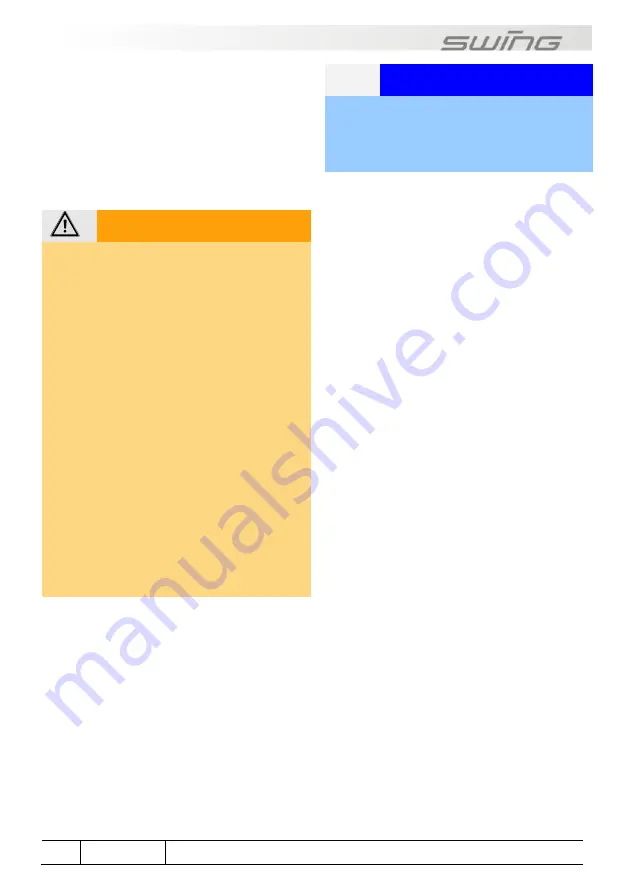
36
Section 07
Dangerous situations and extreme flying
by practical tests and computer
simulations, but they occur very rarely.
It is the case in both of the above
situations that the control travel and
braking distance first reduce and then
the deep stall is caused, mostly by
alteration of the brake travel or angle of
attack, e.g. by a gust or thermal.
WARNING
Flying in extremely humid weather or
in rain is outside of the operating
limits of the glider. If you are not able
to avoid flying in rain, please observe
the following:
it is advisable to fly with slight
acceleration during and after the
rain (min. 30% or more)
use no brake input or as little as
possible
do not use big ears
control travel reduces
avoid tight turns, especially in the
final approach. If conditions allow,
you should also fly slightly
accelerated in this phase
avoid large angles of attack and
the possible early stall near the
ground (release the speed bar only
slowly)
Advertising and adhesives
Always make sure before attaching
advertising to the glider that the
adhesive planned will not alter the
glider’s flight behaviour. If you are in
doubt, we recommend that you do not
attach the adhesive.
PLEASE NOTE
Attaching adhesives to the glider
which are large, heavy, or made of
unsuitable material may result in
revocation of the certification.
Overloading
The glider structure is put under high
levels of strain in particular on extreme
flight
manoeuvres,
rapid
descent
methods (spiral dives) or prohibited
aerobatic
manoeuvres.
They
considerably accelerate the aging
process of the structure and should
therefore be avoided.
The glider must be inspected earlier
than is usually the case if it has been
put under more than the usual degree
of strain.
Sand and salt air
In many cases, sand and salt air cause
the lines and fabric to age much more
rapidly. If you often fly near the sea, the
glider should be inspected more
frequently than normally required.
Temperature range
Extreme temperatures can affect air
density and thus the glider’s flight
behaviour. Be aware of this particularly
in low temperatures and observe the
corresponding instructions for the
various manoeuvres.
As
a
general
rule,
operating
temperatures below -10°C should be
avoided.





































